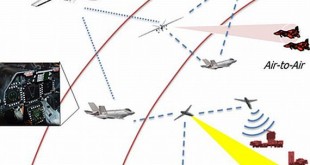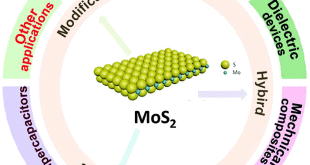Ever-growing data generation driven by mobile devices, the cloud, the IoT , and big data, as well as novel AI applications, all part of the megatrends, requires continuous advancements in memory technologies. RRAM is a nonvolatile memory that is similar to PCM. The technology concept is that a dielectric, …
Read More »Perovskite-based LEDs are beginning to rival OLEDs in terms of efficiency
Perovskites have generated huge interest in recent years because of their potential for solid-state lighting and displays, despite lagging behind other state-of-the-art technologies in efficiency and longevity. Now two independent teams have reported light-emitting diodes (LEDs) based on perovskites that have surpassed a milestone in efficiency [Cao et al., Nature …
Read More »DARPA SCORE program Aims to develop automated tools to Score Social and Behavioral Research important for national security
Social science provides a variety of research and educational capabilities to military to address the human dimensions of military organizations and their operational contexts. For instance, psychological and human performance criteria are firmly rooted in social science constructs within the U.S. Department of Defense (DOD). In the United States, …
Read More »Future Global Quantum internet could be brought down by Quantum terrorists
Quantum cryptography is an emerging technology in which two parties may simultaneously generate shared, secret cryptographic key material using the transmission of quantum states of light. A unique aspect of quantum cryptography is that Heisenberg’s uncertainty principle ensures that if Eve attempts to intercept and measure Alice’s quantum transmissions, her …
Read More »DARPA’s TUNA program develops fiber optical undersea communication Network for backup in contested environment
The capability of Russia and China to disrupt American military wireless and satellite communications using electronic warfare has been rising. This is athreat to US Navy operations that require connectivity among a diverse set of platforms, including submarines, surface ships, aircraft, and shore sites. The links among these platforms support …
Read More »DARPA DBM develops automated AI decision aid for managing Distributed air-to-air and air-to-ground combat under Electronic Warfare environment
As commercial technologies become more advanced and widely available, adversaries are rapidly developing capabilities that put our forces at risk. To counter these threats, the U.S. military is developing systems-of-systems concepts in which networks of manned and unmanned platforms, weapons, sensors, and electronic warfare systems interact over robust satellite and …
Read More »DARPA DRBE developing Super Computers for Live Virtual Constructive training to test AI enabled Radar and EW systems
According to a 23 January DARPA solicitation, the cost, complexity, and limited availability of military ranges mean that operational training and system test and evaluation will increasingly take place in completely virtual environments. Furthermore, the increasing adoption of artificial intelligence (AI) will require orders of magnitude of more test and …
Read More »Rectenna or rectifying antenna critical technology for wireless power systems, powering military drones, and receiving solar power from satellites
Over the past two decades, many wireless systems have been developed and widely used around the world. The most important examples are cellular mobile radio and Wi-Fi systems. Just like radio and television broadcasting systems, they radiate electromagnetic waves/energy into the air but a large amount of the energy is …
Read More »Silicones enhance the reliability of the Electronics, Aerospace and Military systems
Since the 1980’s, the electronics industry has undergone explosive growth, as higher transistor densities have fueled substantial performance advances while paving the way for miniaturization. In order for these systems to function properly, the electronic circuits within them must be protected from extreme temperatures, contaminants, shock and vibration, and harsh …
Read More »A new 2-D material Molybdenum Disulfide Outperforms Graphene in electronics, photonics and Water Desalination
Many alternatives to silicon are being developed, as it is believed that silicon transistors will reach their technological limits after 2020. Two-dimensional (2-D) nanomaterials have shown promise for a new generation of nanoelectronic devices. The most widely studied 2-D nanomaterial is graphene, a single layer of carbon atoms and packed …
Read More » International Defense Security & Technology Your trusted Source for News, Research and Analysis
International Defense Security & Technology Your trusted Source for News, Research and Analysis








